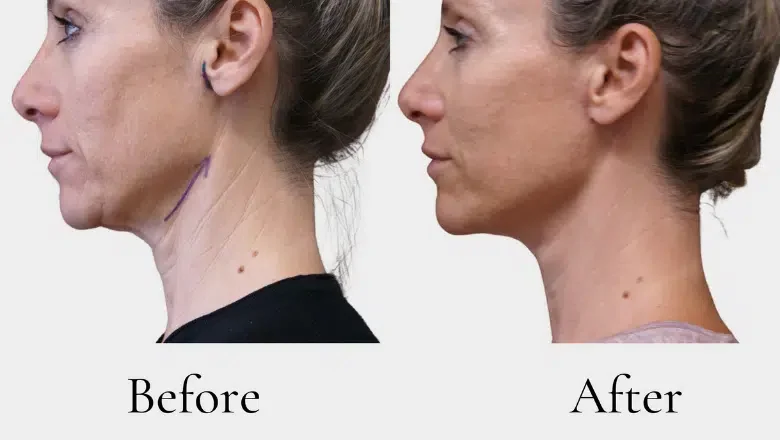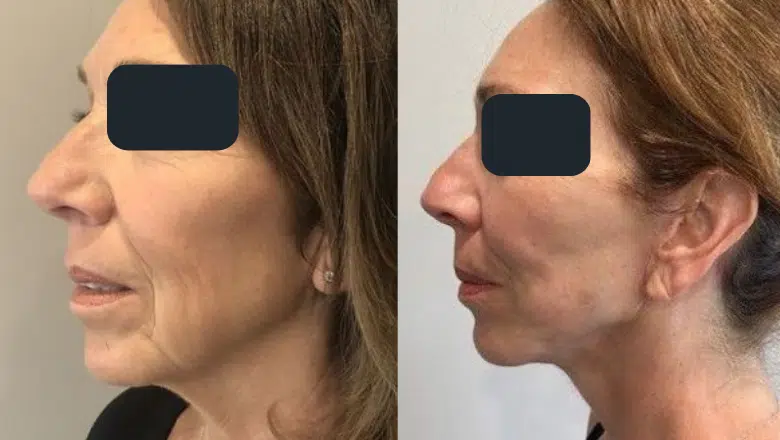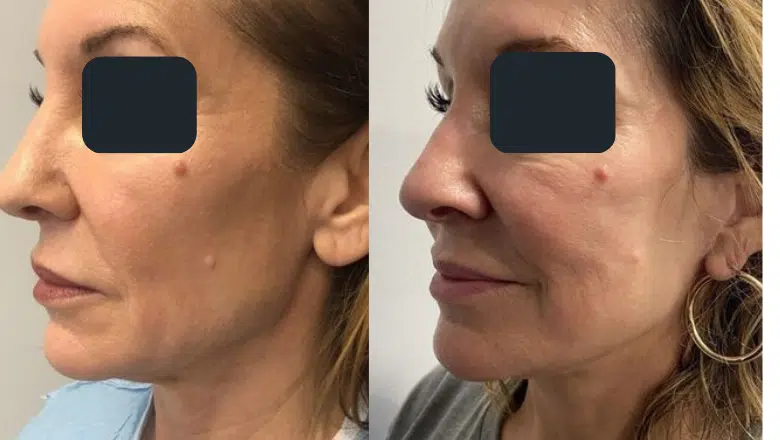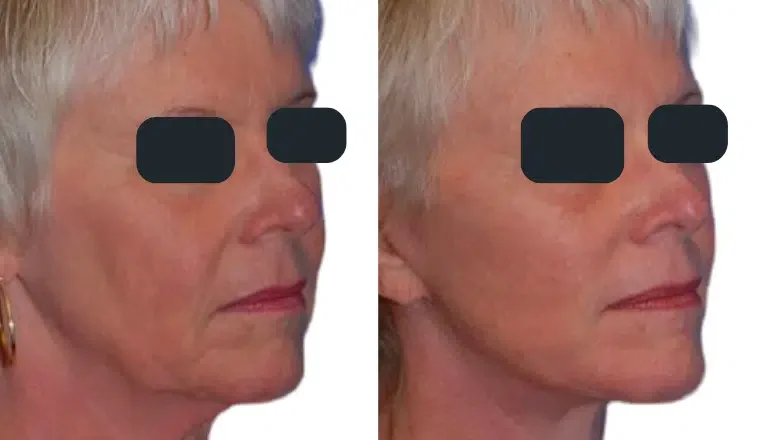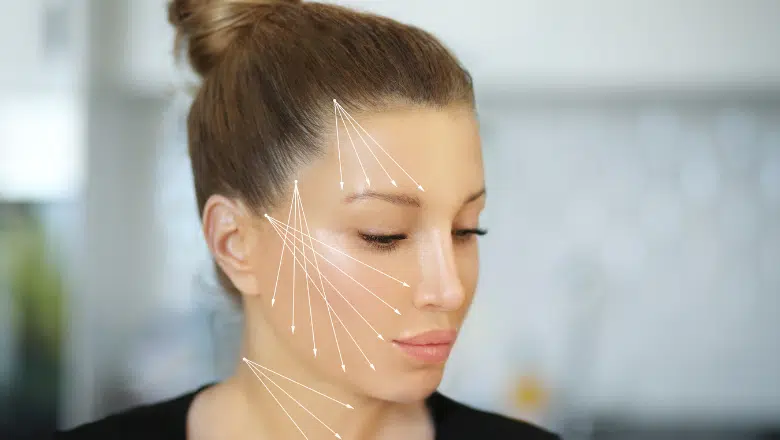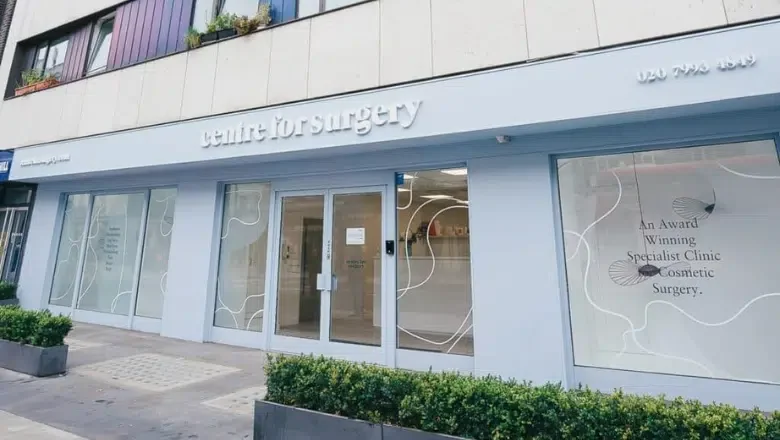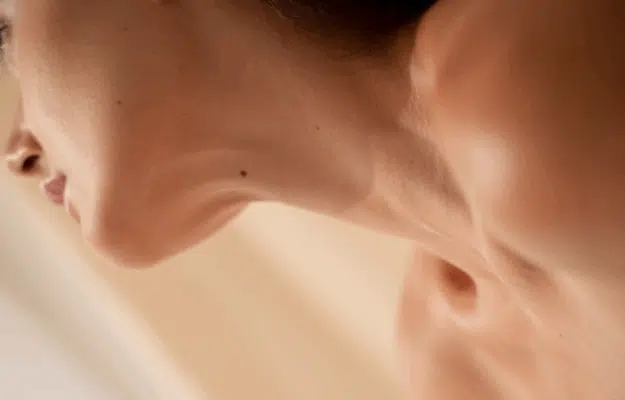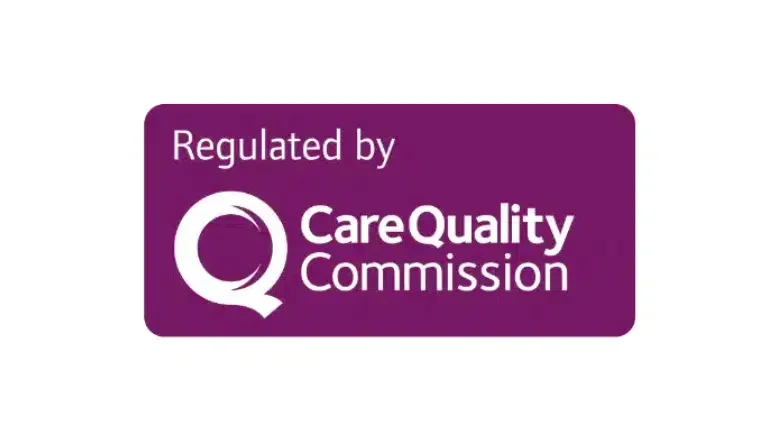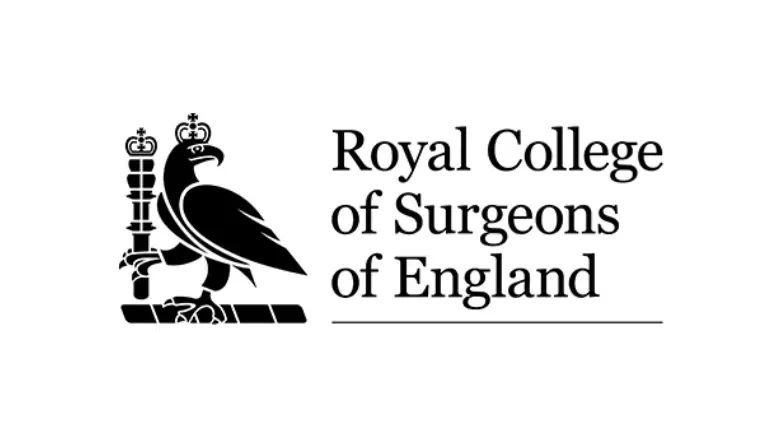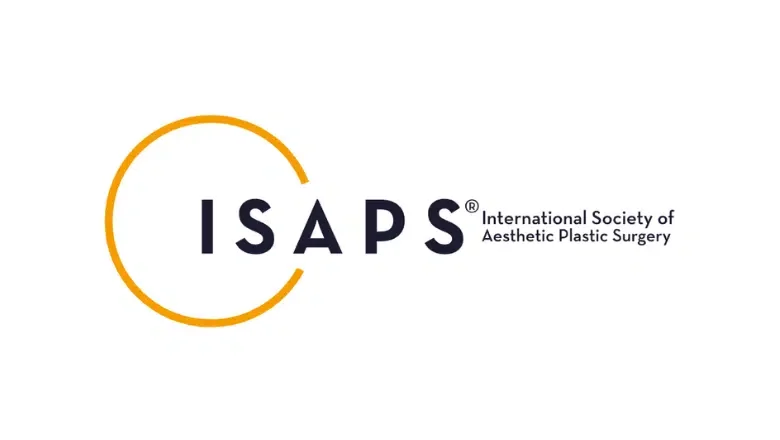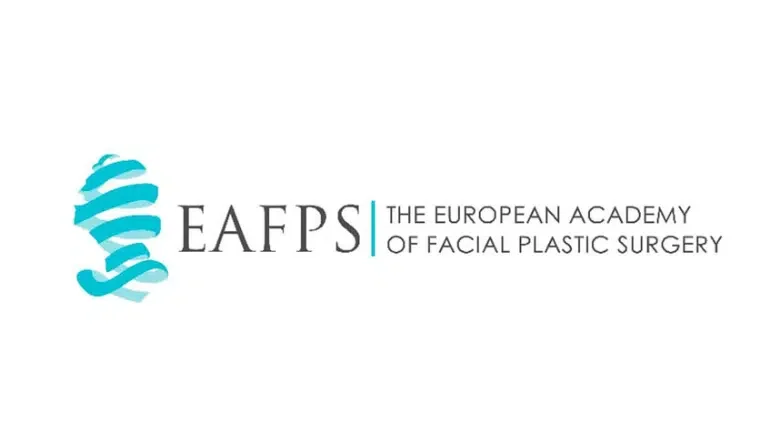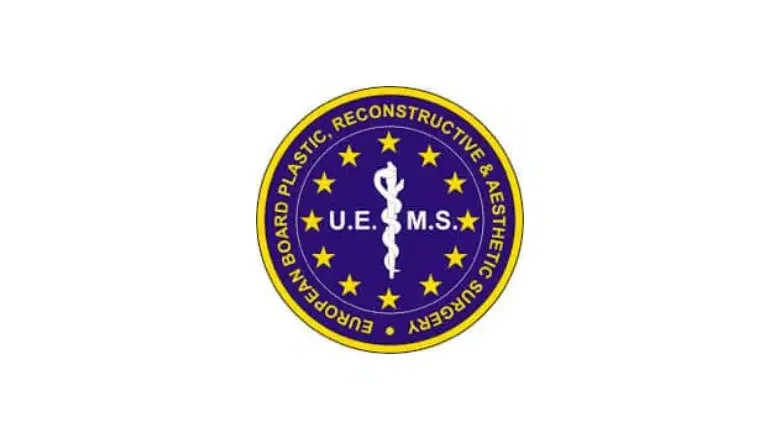Full Facelift & Neck Lift in London
The natural ageing process, along with daily stress, sun exposure, and the pull of gravity, gradually alters our facial appearance. Over time, skin loses its elasticity, muscles weaken, and deep creases begin to form. The contours of the face and neck may soften, leading to sagging skin and the development of jowls. These changes can make you look older than you feel. A full facelift combined with a neck lift is an effective way to restore a more youthful and refreshed appearance by addressing the most noticeable signs of ageing.
A full facelift and neck lift work together to create a comprehensive rejuvenation by tightening the underlying facial muscles, repositioning sagging tissues, and smoothing out loose skin. This dual procedure effectively softens deep lines and wrinkles, particularly around the nose and mouth, while also refining the jawline. One of the most common concerns addressed is the loss of definition in the lower face, where skin laxity can cause jowls to form. A facelift corrects this by lifting and reshaping these areas, restoring a firmer and more sculpted look.
The neck often reveals ageing just as prominently as the face, with loose skin, excess fat, and vertical bands becoming more noticeable over time. A neck lift specifically targets these concerns by removing excess fat, tightening the platysma muscles, and smoothing out sagging skin. This creates a more defined transition between the jaw and the neck, giving a naturally refreshed and youthful result.
This procedure is highly customisable and can be performed on its own or in combination with other cosmetic surgeries for more dramatic results. Many individuals choose to enhance their facelift and neck lift with eyelid surgery or a brow lift to address ageing in the upper face. Treating multiple areas at once allows patients to achieve a more harmonious and balanced rejuvenation that looks natural rather than overdone.
A facelift and neck lift are not just about reducing wrinkles or lifting sagging skin—they are about restoring confidence and helping you look as vibrant and energetic as you feel. The results can be long-lasting, especially when paired with a healthy lifestyle and proper skincare. While ageing is inevitable, modern surgical techniques offer the opportunity to refresh and revitalise your appearance in a way that enhances your natural beauty without compromising your unique facial character.
| Facelift | Fast facts |
|---|---|
| Procedure time ⏳ | 2-3 hours |
| Anaesthetic type 💉 | GA or LA (mini facelift) |
| Length of stay 🛏 | Day case |
| Up and mobile 🚶🏻♂️ | Same day |
| Washing 🛁 | 3 days |
| Travel ✈️ | 1 week |
| Sexual activity ❤️ | 4 weeks |
| Driving 🚗 | 2 weeks |
| Return to work 📅 | Next day (desk work) |
| Postoperative garment 👕 | 2 weeks |
| Sleeping 😴 | On back 1 week |
| Exercise 🏃🏽♀️ | 6 weeks |
| Full recovery 🕺🏻 | 6 weeks |
| Final results 😃 | 3 months |
Facelift & Neck Lift Surgery Before & After Photos
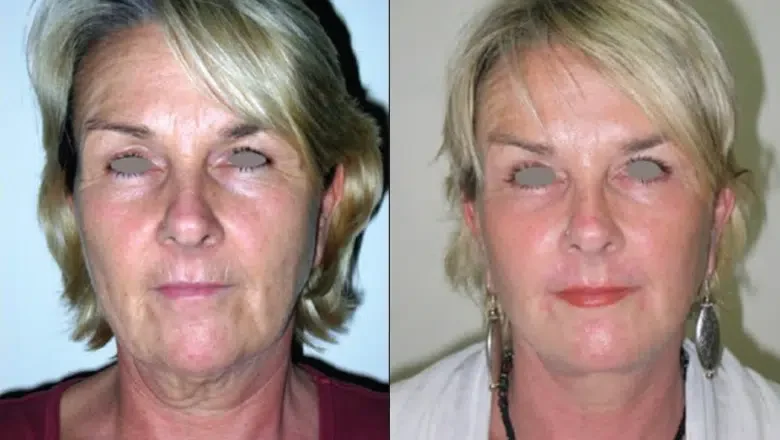
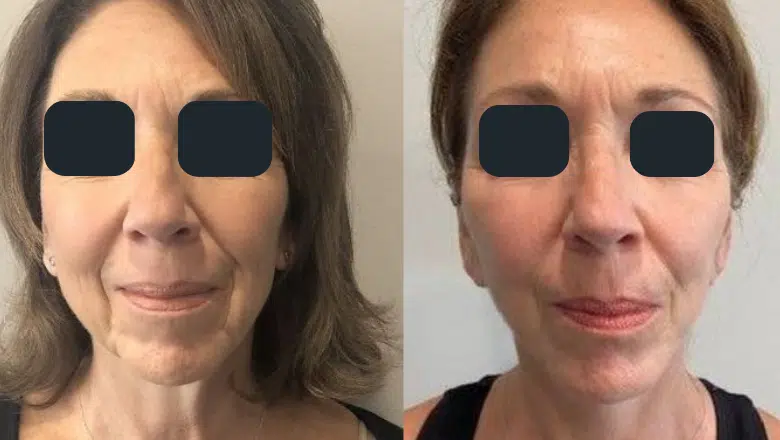
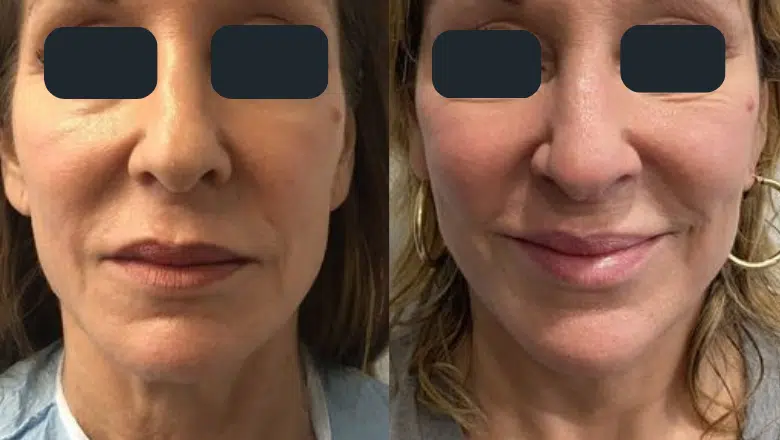
Benefits of a facelift
A facelift aims to improve the appearance of the face by tightening and repositioning the skin and underlying tissue. The procedure can address wrinkles, sagging skin, and loss of definition in the mid-face, jawline, and neck. Here are some of the benefits of a facelift procedure:
Improved Appearance of Wrinkles and Fine Lines
A facelift can smooth out wrinkles and fine lines on the face, particularly those around the mouth, nose, and eyes.
Tightened and Firmer Skin
The procedure can help to tighten and firm the skin on the face, giving it a more youthful appearance.
Enhanced Definition of the Jawline and Neck
A facelift can also help to enhance the definition of the jawline and neck, giving the face a more balanced and proportionate look.
Long-lasting Results
Facelift results can be long-lasting, especially when compared to non-surgical options such as injectable fillers or wrinkle relaxing injections. The effects of a facelift can last for several years, depending on the patient’s age, lifestyle, and overall health.
Increased Self-confidence
Many patients report increased self-confidence after a facelift, as they feel more attractive and youthful.
Customisable to suit individual needs
Facelift procedures can be customised to suit individual needs and combined with other procedures to provide a comprehensive, well-rounded result.
The ideal candidate for a facelift
Whether or not you are a good candidate for facelift surgery depends on a number of factors, including your overall health, skin type, and desired results.
Some of the factors that may make you a suitable candidate for facelift surgery include the following:
Age
Facelift surgery is typically recommended for patients over the age of 40, as this is when the signs of ageing typically become more pronounced.
RELATED: What is the Best Age for a Facelift?
Skin Type
Patients with good skin elasticity and minimal sun damage are generally considered to be the best candidates for facelift surgery.
Desired Results
If you have realistic expectations of what facelift surgery can achieve and understand that it can’t stop the ageing process, it can help to reverse some of the signs of ageing.
Overall Health
Patients who are in good overall health and have no underlying medical conditions that could complicate the surgery or recovery process are generally considered to be the best candidates for facelift surgery.
Some factors that may make you less suitable for facelift surgery include:
Smoking
Smoking can impede healing and increase the risk of complications, so it’s best to quit smoking for at least six weeks before and after the surgery.
Excessive weight
Being overweight can make the procedure more challenging, and it’s best to be at a stable weight before considering the surgery.
Active skin conditions
Patients with active skin conditions such as rosacea, eczema, or psoriasis may not be suitable for the surgery.
Are facelifts only for women?
Men and women both experience the effects of the facial ageing process, and both can benefit from facelift surgery. Demand for facelift surgery in men in the UK has increased by over 25% over the last twenty years, while demand for female procedures has remained relatively static. About 10% of all facelift procedures are performed in men and this is a growing percentage year on year.
RELATED: Male Facelift
The ideal candidates for a facelift procedure are men and women with a face and neck that are starting to look older but with elastic skin and a very well-defined bone structure. Even though most facelift patients are around 40 to 60, a facelift can be successfully performed in patients between 70 and 80, subject to satisfactory medical clearance for the surgical procedure.
Some questions to ask at your facelift consultation
- Am I an ideal candidate for facelift surgery?
- Is it possible to attain results that are in line with my expectations?
- What can I do to achieve ideal results following the facelift procedure?
- Do you have before and after photos of patients who have undergone similar facelift procedures?
- What can I expect in the recovery period after a facelift?
- What scars are created from facelift surgery, and where will they be located?
- Will I experience pain after facelift surgery?
- How soon can I return to work after a facelift?
Do I need a Facelift?
Determining if a facelift is right for you depends on your individual concerns and desired outcome. While there is no specific age or set criteria for a facelift, it is often a suitable option for individuals looking to reverse the signs of ageing and restore a more youthful appearance. At Centre for Surgery, our expert surgeons prioritise achieving a natural-looking and proportional result to ensure that your facelift is not obvious or gives the impression of having had plastic surgery. With the latest advances in facial rejuvenation techniques and an understanding of facial anatomy, we can offer a safe and effective procedure with minimal downtime, providing you with a natural, youthful appearance.
What are the different types of facelift?
Facelift surgery is a cosmetic procedure that restores a youthful appearance to the face by tightening and lifting the skin and underlying tissues. With technological advances and surgical techniques, facelift surgery has become safer, more effective, and longer-lasting.
Our experienced surgeons will create a customised treatment plan based on your needs. Depending on your facial ageing, you may require a mid-face lift, neck lift, or a comprehensive facelift procedure.
Facelift surgery is typically performed under general anaesthesia with the assistance of a qualified anaesthetist. The length of the procedure can vary depending on the extent of the surgery and may take anywhere from three to six hours. Patients can go home on the same day as their procedure, but you may be asked to stay locally for the first 24 hours if they have had a comprehensive facelift to allow our nurses to review you the following day.
Our team uses advanced techniques to minimise scarring and promote a natural-looking outcome. During your initial consultation, your surgeon will discuss the risks and benefits of the procedure, as well as the expected recovery period and any potential complications. Here is a description of the most commonly performed types of facelifts at Centre for Surgery:
SMAS Facelift
The SMAS facelift involves tightening the skin and underlying deeper tissues, including the SMAS layer. In conjunction with the SMAS, the platysma layer in the neck is also tightened to restore youthful contours in the lower face and neck. After reconstructing the deeper tissues using precise suture placement, the skin layer is lifted, tightened, and excess skin removed. In SMAS facelifts, the incision does not have as much tension as a cutaneous skin-only facelift. The resulting scars look much better. SMAS facelifts have more robust results and last much longer than skin-only facelifts. SMAS facelifts, when performed by an expert facelift surgeon at Centre for Surgery can last for ten years or more.
Deep Plane Facelift
A deep plane facelift is the most invasive and major type of facelift surgery. It is a more advanced version of the traditional facelift. Deep plane facelifts have more powerful rejuvenating effects – they can correct deeper nasolabial folds as the plane of dissection is actually beneath the SMAS layer on top of the facial muscles. The deep plane of dissection results in even less tension on the skin compared with a SMAS facelift. Deep-plane facelifts are often ideal for those with thicker skin and heavy faces. Male facelifts are often deep-plane facelifts.
A deep plane facelift requires a surgeon who is experienced in facial plastic surgery and regularly performs this type of facelift. The deep plane facelift takes considerably longer to perform as the dissection is extremely precise and meticulous. There is a higher risk of complications, including nerve injury, which can be permanent. Many facial plastic surgeons and well-informed patients will more commonly opt for a less invasive facelift option to minimise the risk of complications as much as possible.
Mid Facelift
The midface is the term used to describe the area of the face, which comprises the nose, eyes and corners of the mouth. With ageing and loss of skin laxity, these areas undergo sagging and downward descent under the influence of gravity. In some cases, patients may develop localised skin laxity of the eyes, cheeks and mouth without significant ageing of other parts of the face, such as the neck or jawline. In these cases, a mid-facelift could address these ageing changes effectively without the invasiveness and risks of a full facelift. Compared with a full facelift, the results of a mid-facelift are commonly seen as subtle in nature without the longevity of a full facelift. It is rare for our surgeons to perform a mid-facelift on their own. A mid-facelift is commonly combined with other complementary procedures, including eyelid surgery (both upper and lower blepharoplasty), brow lift and fat grafting to the face.
Mini Facelift
A mini facelift is a less invasive form of a traditional facelift. Mini facelifts are often very suitable for patients with mild degrees of ageing and facial descent in the lower third of the face. The most common age range for a mini facelift is patients in their 30s to early 50s who may not need a more extensive full facelift but may still benefit from the improvement of the facial contours, particularly the jowls and more defined jawline. Mini facelifts have experienced a surge in popularity recently and may go by several catchy names. They are often promoted as being able to be performed under a local anaesthetic with minimal downtime. Unlike a traditional facelift, which involves incisions in both front and behind the ears, a mini facelift or short-scar facelift often has incisions primarily in front of the ears without the extension into the posterior hairline. A mini facelift may not be as effective for ageing changes affecting the neck and the lower face. It is important to understand what the mini facelift will address for your face. Your surgeon can advise you on what the mini facelift can address at your consultation.
Neck Lift
A full neck lift procedure is a comprehensive surgical solution to improve visible signs of ageing in the neck area. This procedure involves not only the removal of excess fat but also the tightening of loose, wrinkled skin to enhance the neck and jawline. A neck lift is typically performed in conjunction with a facelift to provide a complete rejuvenation of the face and neck.
The process begins with small incisions made under the chin and in front and behind the ears. Once the incisions are made, the skin is separated from the underlying neck muscle (platysma), and excess fatty tissue is removed through direct removal or liposuction. The neck muscle is then repaired and suspended back to its original position, lifting and tightening the neck muscle to support the neck skin tautly and restore its natural shape and function.
Chin Augmentation
A chin implant can be placed for individuals with a weak or receded chin to improve the chin projection, enhance facial symmetry and create a stronger jawline. After the neck contour has been improved, the skin is then draped back over the area. Any excess skin is removed, and the area is closed with minimal tension, leaving a small, fine scar.
Facelift & Neck Lift Procedure
Here is a general overview of the steps involved in a facelift procedure:
Anaesthesia
The patient will be given either general anaesthesia or local anaesthesia with sedation.
Incision
The surgeon will make incisions in the hairline at the temples, extending around the ear and ending in the lower scalp.
Deep Plane Technique
The surgeon will use a deep-plane technique to lift and reposition the deeper layers of the face, including the cheeks and jowls, to create a more youthful appearance.
SMAS (Superficial Musculoaponeurotic System) and/or platysma muscle tightening
The surgeon will then lift the SMAS layer and/or platysma muscle which will help to further improve the contours of the face and neck.
Excess skin removal
The surgeon will remove any excess skin and trim it to the appropriate size.
Closure
The incisions will be closed with sutures, skin adhesives, or surgical tape.
The traditional facelift generally consists of incisions in both front and behind the ears. The incision behind the ears extends to the hairline. The surgeon would place the incisions strategically to look as inconspicuous as possible and blend in with the natural skin folds and contours. After a skin incision, the skin is gently lifted or undermined to separate the skin from the underlying soft tissue and muscle layer in the previously marked areas by the surgeon. After the soft tissue undermining component, the facelift surgeon surgically tightens the area in its new lifted position with sutures and finally trims any excess redundant tissue.
Facelift incisions & scars
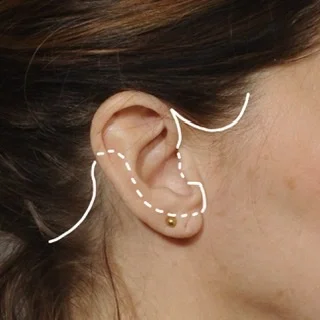
In facelift surgery, positioning the skin incisions is vital for avoiding the impression that you have just had surgery. Most patients prefer a natural and rejuvenated look without features of visible incisions or scars. The expert facelift surgeon takes great care to place incisions in areas that are as well concealed as possible. The skin incisions are best placed in the natural folds both in front of and behind the ear, with the incision extending to the hairline where a neck lift is required. The position of the ear and hairline should be preserved and remain in the same position after surgery. The standard method for a facelift is to gently lift the deeper tissues to reduce tension on the skin layer, which reduces the risk of skin stretching. This means a more cosmetically acceptable scar is possible.
Patients are often concerned about the risk of possible hair loss from the incision. The surgeon will perform a bevelled incision technique to reduce this risk to facilitate proper hair growth. This is very important as it means patients are not restricted to wearing certain hairstyles to hide the incisions due to their visibility. Not all surgeons take this level of care and attention in scar cosmesis. All our surgeons are skilled in placing their incisions along the borders of the ear and behind the tragus of the ear. The incisions are much better concealed than placing incisions in front of the ear, which looks more visible. The incision behind the tragus is closed in such a way as to minimise distortion of this structure. It is essential to have a truly artistic eye for facelift surgery. Patient satisfaction is much higher when the results are natural, restoring youthful vitality without the telltale signs of having had a surgical procedure.
Recovery after a facelift & neck lift
Recovery after facelift and neck lift surgery is an important aspect of the process and can vary depending on the individual patient. Here is a general overview of what to expect during the recovery process:
Swelling and Bruising
Swelling and bruising are common after a facelift procedure and can last for several weeks. The swelling typically peaks in the first 2-3 days and then gradually subside.
Pain and Discomfort
Pain and discomfort are common after a facelift procedure, but they can usually be managed with medication. Your surgeon will provide you with a pain management plan that you should follow.
Stitches and Bandages
The incisions will be closed with sutures, skin adhesives, or surgical tape. The bandages will be removed within a few days of the surgery, and the stitches will be removed within a week or two.
Rest and Relaxation
Getting plenty of rest and avoiding strenuous activity for at least 2-4 weeks after the surgery is important. This will help to minimise swelling and promote healing.
Follow-up Visits
You will have several follow-up visits with your surgeon to monitor your progress and address any concerns. Your surgeon will provide detailed instructions on how to care for your incisions and monitor your recovery.
Final Result
The final result of the facelift procedure will not be immediately visible, as it can take several weeks for the swelling and bruising to subside. It will be visible around 2-3 months after the procedure.
Risks of facelift surgery
With any cosmetic surgery procedure, there is always the potential for complications, whether minor or major in nature. At Centre for Surgery, our facelift surgeons take extra precautions to keep the risk of complications as low as possible. Despite this, it is still very important to know the range of potential complications that could occur with facelift surgery.
Potential risks of facelift surgery
Postoperative haematoma
A haematoma is a collection of organised blood clots beneath the skin. A haematoma after facelift surgery is one of the most common complications after facelift surgery and usually arises early, often within 24 hours after surgery. If a haematoma is suspected, your surgeon will assess you urgently to decide the best course of action. In the clinic, most haematomas can be removed with a simple needle and syringe. Some haematomas will require surgical removal under local anaesthetic.
Surgical site infection (SSI)
SSIs are always a potential risk after any surgical procedure. Bacteria can enter wounds through small entry points, leading to a localised infection. Clinical features of infection include redness, swelling, heat and pain in the affected area. SSIs need treatment with a course of antibiotics.
Nerve injury
During the undermining of the skin flap, the nerves of the face could be injured, leading to numbness, tingling or weakness of the affected facial muscles. Most nerve injuries are temporary in nature and often settle after a few months. A minority of nerve injuries are permanent in nature.
Scarring and hair loss
Scars from facelift surgery are hidden in the natural hairline and skin folds. In some people, hypertrophic scarring can develop. Thickened scars can lead to either temporary or permanent hair loss in the region of the incision lines. Injection of steroids and or hair transplantation can address this issue effectively.
Skin necrosis
Skin necrosis refers to the death of the skin flap due to an insufficient blood supply to the area. Skin necrosis is a rare complication of facelift surgery, but the risk increases in patients who smoke.
Many potential complications of facelift surgery can be effectively managed with meticulous postoperative care. Our postoperative support programme was described as ‘outstanding’ by the CQC. At your consultation, it is important to understand all the potential risks and complications of facelift surgery. Please take care to follow all of the surgeon’s pre- and post-operative instructions to maximise the chances of successful healing.
Pixie Ear Deformity
The importance of making precise incisions for facelift surgery cannot be emphasised enough when it comes to preventing an unnatural look on the earlobe, also known as a pixie ear deformity. The pixie ear deformity develops as a result of inaccurate correction of the earlobe after the re-draping of the facial skin. Often, earlobe distortion develops from excessive traction being placed on the earlobe. The stretched earlobe extends downwards, a tell-tale sign of recent facelift surgery. It is commonly associated with older methods of performing facelift surgery, with much of the tension being placed on the skin rather than the deeper soft tissue layers. Our skilled plastic surgeons avoid this unnatural appearance with modern techniques for performing facelift surgery.
Facelift & Neck Lift Costs London - How much does a facelift cost in London UK? Prices & Fees
Several factors will determine the overall cost of the facelift procedure, and the final quotation will be given after your face-to-face consultation with your specialist plastic surgeon.
- Type of facelift – SMAS, deep-plane, composite
- Local anaesthetic or general anaesthetic
- Primary or revision facelift
- Facelift as a standalone procedure or combined with other procedures such as blepharoplasty, fat injections or laser resurfacing
Why not call 0207 993 4849 and speak to one of our expert patient coordinators, who can give you a rough costing before consulting for a facelift?
RELATED: How much does a facelift cost?
Remember that price should never be the determining factor when choosing the right surgeon and hospital for facelift surgery. A correctly performed facelift is a significant undertaking. We feel that safety and quality of service should be your number one priority and instil in you the confidence that our team will look after you before, during and after your procedure to the best of their ability.
Which procedures can be combined with a facelift & neck lift?
While a combined facelift and neck lift can provide significant improvement on its own, it can also be combined with other procedures to enhance the overall results. Some of the most common procedures that can be combined with a facelift include:
Chin & Neck Liposuction
This procedure can be used to remove excess fat in the face and neck area. It can also be used to contour the face and improve the appearance of the jawline.
Fat Grafting
This procedure can be used to add volume to the face, particularly to the cheeks, lips, and temples.
Eyelid Surgery (Blepharoplasty)
This procedure can address wrinkles, puffiness, and sagging skin around the eyes. It can also remove excess fat and skin from the upper and lower eyelids to improve the appearance of the eyes.
Brow Lift (Forehead Lift)
This procedure can address wrinkles and sagging skin on the forehead and can also reposition the eyebrows to a more youthful position.
Rhinoplasty (Nose Job)
This procedure can be used to reshape the nose and improve its overall appearance. It can also be used to address breathing problems caused by structural abnormalities in the nose.
Otoplasty (Ear Surgery)
This procedure can be used to reshape the ears and make them less prominent.
Why Choose Centre for Surgery?
Centre for Surgery is a premier destination for facelift and neck lift procedures in London. We provide expert surgical skills, patient-centred care, and state-of-the-art facilities. Our clinic is renowned for delivering tailored treatments that align with each patient’s unique needs and aesthetic goals.
What is included in my facelift treatment package?
- As many preoperative consultations with your surgeon as you like to make sure the procedure is correct for you
- Enhanced same-day discharge with the added benefits of recovering in your own home
- 24/7 clinical support from your surgeon for the first 48 hours and our expert postoperative support team
- Your very own dedicated patient coordinator
- In-depth preoperative medical assessment to make sure you are fully fit for the rhinoplasty procedure
- Exceptionally high standards of postoperative care are described as ‘outstanding’ by the CQC, with regular telephone and face-to-face checks by our expert postoperative support team.
Exceptional Expertise and Personalised Care
Our team of highly skilled surgeons is dedicated to offering the highest standards of care. We understand that each patient’s journey is unique, and we strive to provide a comfortable, supportive environment from consultation to recovery.
State-of-the-Art Facilities
Located at 95-97 Baker Street, London, our clinic is equipped with the latest technology and adheres to stringent safety protocols. This ensures that your procedure is performed in a safe, welcoming environment.
Patient Testimonials:
- “My experience at Centre for Surgery was nothing short of exceptional. From the warm welcome at reception to the expert care I received from my surgeon, every step of my facelift journey was handled with utmost professionalism and care.” – Jane S.
- “Choosing Centre for Surgery for my facelift was my best decision. The results are natural and exceeded my expectations. The staff were incredibly supportive throughout the process.” – Michael T.
- “The level of attention and care I received at Centre for Surgery was remarkable. The team made sure I was fully informed and comfortable at every stage of my facelift procedure.” – Sarah L.
Comprehensive Support and Information:
- Visit our About Us page for more insights into our philosophy and approach.
- Explore our Plastic Surgery Blog for detailed information and insights into facelift procedures and other treatments.
- Our Clinic FAQs provide answers to common questions about procedures, preparation, and aftercare.
- Learn more about our Baker Street Clinic and the exceptional facilities we offer.
Flexible Finance Options
We understand that financial considerations are important. Discover our finance options, including 0% APR with Chrysalis Finance, to make your journey to a rejuvenated appearance more accessible. Find out more about our finance options here.
Book Your Consultation
To start your journey with Centre for Surgery, or for more personalised information, please don’t hesitate to contact us:
- 📞 Phone: 0207 993 4849
- 📧 Email: contact@centreforsurgery.com
- 📍 Address: 95-97 Baker Street, London W1U 6RN
- Contact us to schedule your consultation and take the first step towards a refreshed and youthful appearance.
Essential Steps to Take Before Your Consultation
Conduct Thorough Research
- Read a procedure guide to gain further insight into your surgery
- Visit our website to learn more about the specific procedure you’re interested in
Is a Medical Referral Necessary for a Consultation at Our Clinic?
- A medical referral is helpful but not required for purely cosmetic consultations.
- If you seek a consultation for medical reasons and have private insurance, please obtain a referral from your GP or specialist.
Maximising the Benefits of Your Consultation
- Arrive a little early for your in-person consultation
- Feel free to bring a friend or family member to assist you in processing information and discussing your options
- Be prepared to undress for a physical examination; wear simple clothing
- Take detailed notes during the consultation and carefully review all provided documents
Seeking More Information Before Scheduling a Consultation?
- Learn more about pricing, medical payment plans, and financing your surgery.
- Request additional information about the procedure – call or contact us
Booking Your Consultation
- Secure your initial consultation by prepaying the £100 cosmetic consultation fee when scheduling your appointment.
ARRANGE A PHONE CALL FOR MORE INFORMATION
- To arrange a surgeon consultation at our Baker Street clinic, contact us or call on 0207 993 4849
For more information, email us: contact@centreforsurgery.com
FAQs
-
Can a facelift get rid of sun damaged skin?A facelift can improve the appearance of sun-damaged skin by reducing the appearance of wrinkles, sagging skin, and age spots. However, it does not remove sun damage or repair the underlying damage caused by UV radiation. To address sun damage, other procedures such as laser resurfacing, chemical peels, or photodynamic therapy may be more appropriate. It is important to discuss your specific concerns and goals with a qualified plastic surgeon to determine the best course of action for achieving the desired results.
-
What is the best age for a facelift?The timing for facelift surgery is not based on a specific age, as everyone experiences ageing differently based on various factors such as genetics, sun exposure, smoking, and skincare routine. Generally, facelifts can be performed on patients from their early 40s to late 70s. The longevity of the results is typically better when the procedure is performed on a younger individual with good skin elasticity. Ultimately, the decision to undergo a facelift should be based on the individual's personal goals and expectations.
-
Will people be able to see that I’ve had a facelift?After undergoing a facelift, patients often receive compliments from friends and family about looking refreshed and well-rested. Modern facelift techniques aim for a natural, subtle result rather than an obvious, overdone appearance. There is no characteristic look of a facelift, and the goal is to restore a youthful appearance without any obvious signs of surgery. With modern procedures, the results are undetectable, and you will look like a refreshed and rejuvenated version of yourself.
-
What is a skin-only facelift and why is it not performed at Centre for Surgery?The cutaneous lift is also known as a skin-only facelift. The cutaneous lift does not address the underlying muscle or SMAS layer. Like with all facelifts, the skin is gently separated and secured in a new lifted position before trimming any excess skin off. Cutaneous facelifts are generally considered to have a lower risk of complications and are often performed under a local anaesthetic. Many surgeons may recommend this option for older patients who may suffer from various medical co-morbidities that may place them at high risk of complications during general anaesthesia. There are several significant shortcomings associated with cutaneous lifts - only skin laxity can be corrected, and the results are not particularly long-lasting. Scars are more obvious, with more risk of skin rippling from superficial suture placement. The scarring is more evident in skin-only facelifts as the tension is held entirely on the skin layer. With continued ageing, the skin layer which is being placed under considerable stretch may actually lose more collagen and elastin compared with other methods of facelift surgery. The cutaneous lift is not generally recommended at Centre for Surgery as there are much better options available.
-
How does the face age over time?To better understand what facelift surgery can achieve, it is important to gain an appreciation of what is involved in the ageing process of the face and neck. With the ageing process, the skin will lose between 20-80% of hydration and volume as time progresses. This loss of volume is primarily related to reduced synthesis of the structural components of skin, which include both collagen and elastin, but also glycosaminoglycans (GAGs), which are found in the dermal layer of the skin. This loss of structural support leads to the commonly seen end result of skin laxity. Skin laxity is also accompanied by loss of adhesion with the deeper-lying muscles and soft tissues. This leads to loss of tissue tightness. The skin, therefore, sags, resulting in jowl formation and loss of a well-defined jawline. The extra skin and underlying soft tissue sag downwards, leading to the loss of the sharply defined cervicomental angle between the neck and chin. Ageing changes in the midface region lead to volume loss in the cheeks and bone loss from the facial skeleton. The resulting hollowed-out appearance becomes more evident with age. The younger face possesses features consistent with a youthful inverted triangle. With age, this triangle flips over as the face gains more volume in its lower part due to the sagging of the soft tissues under the influence of gravity and the loss of volume from the midface.
-
What are the potential risks associated with facelift surgery?Facelift surgery, like any medical procedure, carries certain risks and possible complications. It's important that you have a thorough discussion with your surgeon about these risks during your consultation. Additionally, the consent forms you'll be provided with will detail these risks comprehensively. Remember, there's no such thing as too many questions when it comes to your health and safety. If anything is unclear, always feel free to ask for further explanations, translations, or more detailed information.
-
Can smoking or alcohol affect the results of a facelift?Certain lifestyle factors can increase the risk of complications during and after your surgery. These include smoking, drinking alcohol, being overweight and taking drugs (for medical or recreational use.)
Those who smoke before facelift surgery place themselves at greater risk of developing a postoperative wound infection as the constituents of tobacco smoke interfere with the natural healing processes of the body. It is strongly recommended to stop smoking at least six before facelift surgery. It is also recommended to stop alcohol usage at least one week before surgery and one week after to improve wound healing and also to facilitate a safer anaesthetic as alcohol is metabolised in the liver in common with anaesthetic drugs.
We would also recommend keeping physically active before surgery and maintaining a healthy BMI and avoiding all recreational drug use. -
What should I ask the surgeon during my consultation for a facelift?The consultation with the surgeon is the ideal time to gain an in-depth understanding of the procedure by asking as many questions to enable you to be fully informed about the procedure and what it involves before deciding on surgery. All patients should make sure they have all the facts before proceeding, and the face-to-face consultation is the key part of the patient journey to impart the necessary education on what a facelift involves.
The following are examples of questions you could ask your facelift surgeon:
Am I suitable for a facelift?
What can I expect to achieve from the facelift procedure?
Am I being realistic on what I am hoping to achieve
Am I able to see before and afters of similar patients who have undergone a facelift?
What does the recovery period involve and is there anything I can do to optimise my recovery?
What level of aftercare do you provide?
What happens if I am not happy with the results achieved from facelift surgery? -
How long does a facelift take to perform?A facelift procedure has evolved over the years into a highly advanced facial rejuvenation technique that takes about 2-3 hours to perform. The most commonly used method is a SMAS facelift combined with facial fat grafting, also known as a "lift and fill" facelift. Older methods of facelift surgery, such as the deep plane facelift, used to take well over 5 hours to perform and carried a higher risk profile. The deep plane facelift was often a more painful procedure with significant postoperative swelling with a prolonged recovery and long healing period. The facelift procedure performed at Centre for Surgery results in a much faster recovery with less risk. Our surgeons are highly specialised experts in facial surgery with years of experience in performing meticulous facelift surgery.
-
Do you do fat transfer as part of a facelift?Fat transfer is often a crucial aspect of a facelift procedure to achieve comprehensive facial rejuvenation. The volumetric facelift approach involves the restoration of facial volume associated with ageing through the combination of fat injections with a SMAS facelift procedure that lifts and tightens the deeper facial structures. Almost all patients can benefit from the addition of fat grafting as part of facelift surgery.
-
What happens after my facelift procedure?After the facelift surgery, you must attend a postoperative wound check-up appointment with one of our experienced nursing staff between 1 and 2 weeks after surgery in the clinic. Your dressings will be removed, and the incisions will be inspected to make sure they are healing as expected. Any permanent sutures will be removed, and fresh dressings may be applied. At six weeks, you will come in to see your surgeon, who will review your healing and assess the early results. From the moment you get home after your procedure, you will have our postoperative support team closely supervise your healing and are on hand to answer any questions you may have. If you have any concerns, the team will book you in to see a nurse the same day if necessary. You must have full postoperative support to give you peace of mind that any concerns can be managed in a proactive manner. Our aftercare programme was described as 'outstanding' by the CQC.
-
When can I resume physical exercise after facelift surgery?It is recommended to avoid strenuous exertion for at least three weeks after the facelift procedure, but working from a computer at home is perfectly ok from the next day. You may experience a degree of bruising and swelling particularly around the incisions, but this is temporary and will settle with time, usually over the course of a week. It is fine to return to work after two weeks, depending on the nature of the job. The old-style facelifts used to result in significant downtime, with patients being at home for many weeks and even months, especially if it was a deep place facelift. The deep plane facelift involves the repositioning of tissues from the underlying bone, and this often leads to very considerable swelling. At Centre for Surgery, our surgeons do not perform deep plane facelifts as we believe the risks and complications of such an invasive style of facelift considerably outweigh the benefits. The key to modern facelift surgery is using delicate techniques that minimise swelling and downtime resulting in much better results in the medium and long term.
-
What does a facelift involve?A facelift, or rhytidectomy, is a surgical procedure that aims to improve the visible signs of ageing on the face and neck. The procedure typically involves the following steps:
Anaesthesia: The patient is given either general anaesthesia or local anaesthesia with sedation to ensure comfort during the procedure.
Incisions: Incisions are made in the hairline at the temples, continuing down around the front of the ear and ending in the lower scalp. Sometimes, a small incision is made under the chin to address sagging in the neck area.
Re-positioning of facial tissues: The surgeon will then lift the skin and underlying tissues, re-positioning them to create a more youthful and natural appearance.
Tightening of facial muscles: The underlying facial muscles are also tightened to improve facial contours further and address sagging.
Removal of excess skin: Any excess skin is trimmed away before closing the incisions.
Closing incisions: The incisions are closed with sutures or staples, and a dressing is applied to protect the area.
The exact technique will depend on the individual's specific needs and goals and will be discussed during the consultation with the surgeon. A facelift typically takes several hours to complete and is usually performed as an outpatient procedure, meaning the patient can go home the same day. -
Full facelift vs mini facelift - which option is right for me?The decision to have a full facelift or a mini facelift depends on a variety of factors, such as the extent of facial aging, skin laxity, and personal goals. A full facelift is a comprehensive procedure that addresses the entire face and neck, including the midface, jowls, and neck. This procedure involves more incisions and a longer recovery time but typically delivers more dramatic and long-lasting results.
On the other hand, a mini facelift is a less invasive procedure that focuses on specific areas of concern, such as the lower face and jowls. It involves shorter incisions and a shorter recovery time but may provide more subtle results. -
How do I prepare for my facelift surgery?Preparing for facelift surgery is an important step to ensure a successful outcome. Here are some tips to help you prepare:
Follow your surgeon’s instructions: Your surgeon will provide you with specific instructions to follow before the surgery. It’s important to follow these instructions carefully to ensure the best possible outcome.
Quit smoking: Smoking can increase the risk of complications during and after surgery. It’s important to quit smoking at least four weeks before the surgery and avoid smoking for at least two weeks after the surgery.
Avoid certain medications and supplements: Certain medications and supplements can increase the risk of bleeding and bruising. You may need to stop taking these medications and supplements for a period of time before the surgery. Make sure to inform your surgeon of all medications and supplements you are currently taking.
Get plenty of rest: Getting enough rest before the surgery is important for your overall health and wellbeing. Make sure to get plenty of sleep in the days leading up to the surgery.
Prepare for the recovery period: You will need to plan for the recovery period after the surgery. This may include arranging for someone to help you with daily tasks and avoiding certain activities for a period of time.
Eat a healthy diet: Eating a healthy, well-balanced diet before the surgery can help promote healing and reduce the risk of complications.
Stay hydrated: Drinking plenty of water and staying hydrated is important for your overall health and wellbeing, as well as for promoting healing after the surgery.
Prepare for the day of surgery: Make sure to wear comfortable, loose-fitting clothing and avoid wearing makeup or jewelry. Follow any specific instructions provided by your surgeon for the day of the surgery. -
What can I expect to experience once the facelift procedure has been completed?Once the TIVA anaesthetic has been stopped, your anaesthetist will wake you up at the end of the procedure. The recovery after TIVA anaesthesia is more smooth compared with a traditional general anaesthetic. Once you are fully recovered from the effects of the anaesthetic, your nursing team will give you water and something light to eat. Once you are fit for discharge, you will be allowed to leave the clinic with a responsible adult escort. It is not uncommon to experience a degree of discomfort after the procedure which will settle with simple over the counter painkillers. You have access to our postoperative support team at any time after your procedure.
-
Will I need a drain after my facelift?To prevent excessive fluid buildup after a facelift procedure, drains are commonly used. Typically, a drain will be placed during the surgery and removed the day after. However, if you are having a short scar facelift in a limited area, a drain may not be necessary. Your surgeon will discuss the need for a drain during the preoperative consultation and will advise you on what to expect during the procedure and after.
-
Will I need an escort to take me home after my facelift procedure?Yes. You will require a responsible adult escort to accompany you home after surgery. You must not travel home alone. You will also require a responsible adult person to look after you for at least the first 24-48 hours after the facelift procedure.
-
How soon can I return to work after a facelift procedure?It is perfectly sensible to be able to work from home the day after your surgery. Some patients choose not to work outside the home for the first week after a facelift if they do not want others to know what procedure they have had done. However, you will not affect the results from a facelift by leaving the home.
-
When can I expect to see the final results of my facelift?After a facelift, the final results are typically evident at about 6 weeks after the procedure with further improvement being noticeable beyond the first 6 weeks was the healing of the soft tissues has completed. This can take up to 12 months. At your consultation, your plastic surgeon will advise you on how long your results make take to appear.
-
How long can you expect the results of a facelift to last?The effects of a facelift are not permanent, but they do last a considerable amount of time. Typically, you can expect the results to last anywhere from five to twelve years. The longevity of the results depends on various factors, including the specific techniques used and your skin's natural ageing process. It's common for individuals to undergo two or three facelifts over their lifetime, considering factors like the degree of modification in each procedure and the scarring from previous surgeries. However, it's important to understand that a facelift doesn't halt the ageing process. Natural ageing will continue even after the surgery.
-
What do facelift scars look like?Scars are unavoidable when incisions are made, however, because the incision for a facelift is made within natural folds found in the front, inside and behind your ears, there should not be any visible scarring.
-
Do hairlines shift after a facelift?It is possible for hairlines to shift slightly after a facelift, particularly if the procedure involves incisions around the temple area. However, skilled surgeons take this into consideration during the planning stage of the surgery to minimise any noticeable changes to the hairline. Additionally, any shifts in the hairline are usually minor and temporary and should resolve within a few weeks to months after the procedure.
-
Are there any risks associated with a facelift?There are rarely any major risks associated with facelift other than the most common potential risks such as bleeding, scarring, infection and poor healing. With maximum safety optimisation, these risks can be completely avoided.
-
Will I experience swelling and bruising after facelift surgery?You will experience some swelling and bruising for 24 to 48 hours following the surgery but it is part of the healing process and it should lessen within two weeks. We recommend our patients try cold compression on the face to aid with the swelling and bruising.
-
What is the recovery like after facelift surgery?A large, soft dressing will be taped in place on the face. These first dressings are extremely important and should be left in place for the exact duration recommended by the surgeon, usually a day or two. It can then be removed and replaced by an elastic covering that will help to contain and reduce swelling. Cold compression is recommended to help reduce the swelling and bruising.
-
What results can I expect after my facelift surgery? The results of facelift surgery are long-lasting, however, the ageing process cannot be stopped and will affect it making it difficult to tell how long the results will last as everyone ages differently.
-
How long will my facelift last?After a facelift, the results can last anywhere from 5-15 years, depending on the individual's ageing process and lifestyle factors such as sun exposure, smoking, and skincare regimen. While the procedure does not stop the natural ageing process or prevent further wrinkles from forming, it can provide a significant improvement in the appearance of sagging skin and deep wrinkles. Many patients report looking 10-15 years younger after a facelift and feel more confident and rejuvenated. In some cases, additional non-surgical treatments such as injectables or laser resurfacing can be used to enhance and maintain the results of the facelift.
-
Are there any limitations to the results I can achieve with a facelift?While facelift surgery can achieve significant improvements in facial aging, it is important to have realistic expectations about the results. The extent of improvement will depend on several factors, including the age of the patient, the degree of facial aging, the quality and elasticity of the skin, and the patient’s overall health.
Facelift surgery can provide dramatic improvements in the appearance of the face, but it cannot stop the aging process. Over time, the skin will continue to age, and the effects of the facelift will gradually diminish.
It is also important to note that facelift surgery primarily addresses the lower two-thirds of the face, including the jowls, neck, and cheeks. It does not address the forehead, eyelids, or other areas of the face. However, these areas can be addressed with additional procedures, such as brow lift or eyelid surgery, which can be combined with a facelift for a more comprehensive rejuvenation.
What To Expect
The facelift consultation
We always recommend a face-to-face consultation with one of our specialist plastic surgeons as the first step in your journey towards facial rejuvenation. When you meet with one of our surgeons, your surgeon will listen carefully to what you hope to achieve from the facelift procedure and give you an expert opinion on what can and cannot be achieved after a thorough physical examination. Your surgeon may use computerised digital imaging to map the structure of the face and neck in detail to give you an idea of what your face could look like after your procedure.
Your surgeon will also take several measurements as part of a detailed facial analysis. Finally, high-resolution photographs are taken from several views. Your surgeon will also discuss the potential risks and complications of facelift surgery and what to expect in the postoperative phase during your healing and recovery. It is important to know what medicines you are taking as some can interfere with blood clotting and may need to be stopped. Any history of medical conditions or previous surgery will also be recorded, and all the compiled information will be used to decide your medical fitness for the facelift procedure. After a recommended two-week "cool off" period and provided you are appropriate for the procedure, you can then decide whether you would like to proceed with the facelift procedure. If you are unsure about any aspect of the facelift procedure and what it entails, we invite you to return for as many follow-up consultations with your surgeon as you like to ensure that facelift surgery is right for you. The consultation lasts about 45 minutes on average. It may take longer if your procedure is more complex or is a revision procedure. We would actively recommend attending a follow-up consultation to ensure all your questions are answered.
Before your facelift procedure
Once you have decided to move forward with facelift surgery, our preoperative assessment team will be in touch to assess your medical fitness before coming in on the day of surgery. Before your procedure, there are several instructions to follow, including stopping any aspirin-containing medicines as these can increase bleeding and, ideally, stopping smoking. Smokers have a higher risk of slower wound healing and more chance of wound complications. On the day of your procedure, you must follow the preoperative fasting guidance, which includes no food for 6 hours prior. Only clear fluids (water) are allowed up to 2 hours before your procedure. If you have mini facelift surgery under local anaesthetic, there is no need to fast beforehand.
On the day of your facelift procedure
When you arrive for your facelift procedure, you should aim to arrive on time to allow the admission process to proceed smoothly. One of our nurses will formally admit you and check several items, including ensuring you have your postoperative medications. You will have your vital signs measured, including blood pressure and heart rate. The anaesthetist will then meet you to perform a preoperative airway assessment. Finally, your surgeon will consent you to the planned procedure, followed by a detailed preoperative marking of the areas to be treated.
Facelift surgery takes about 2-3 hours to perform, and if you choose GA, our anaesthetists use TIVA general anaesthesia to keep you comfortable throughout the procedure. Depending on the type of facelift surgery, the surgeon makes small incisions both in front of and behind the ear, followed by the separation of the facial skin from the underlying muscles. The SMAS layer is tightened, followed by trimming of the redundant skin folds and the skin is carefully closed. This procedure is repeated on the other side also. Neck liposuction may also be performed to remove excess fat from the neck and chin. After the procedure is complete, you will spend time in our recovery suite, where you will be prepared for nurse-led discharge once you have met all the discharge criteria. It is important to have a responsible adult, such as a friend or family member, to accompany you home and to look after you for the first 24 hours.
After the procedure
Once you are safely home, you can be assured of access to our specialist postoperative team around the clock. You will be given a contact number to contact your surgeon in the first 24 hours after surgery if there is any concern. Facelift surgery is associated with minimal postoperative discomfort, although a bruised and swollen appearance is common for the first week after surgery. Bruising should start to subside after 7-10 days. You should avoid intense sunlight after the procedure to reduce the risk of pigmentary changes. You should wear the postoperative support garment continuously for the first 2 weeks after the procedure. Our postoperative team will look to call every day for the first two weeks after your procedure. This is so we can monitor your levels of comfort and can alert your surgeon if there is any concern. Our proactive approach allows the detection of any potential issues early, which results in more effective treatment. You are advised to rest for at least a few days after your facelift procedure, which will help with pain control. Heavy exercise should be avoided for at least the first four weeks. Our postoperative clinical team will assess your face to face at your 1-week post-operative appointment to ensure healing is progressing normally and the site of the wound is healthy. Your sutures will be removed if your surgeon uses non-absorbable sutures. You will be booked for your surgeon's follow-up appointment six weeks after your procedure.
Our aftercare programme was recently described as 'outstanding' by our regulator, the Care Quality Commission.
Our postoperative support team call all our patients during the first two weeks. The proactive nature of our postoperative support gives every patient the best opportunity for a smooth postoperative recovery free of complications. In many cases, if complications were to occur, their impact would be markedly lessened by early detection, prompt clinical assessment and correct treatment. When a patient expresses concern to our team over the phone, we often call patients on the same day for assessment with one of our expert nursing team. Even if there is no significant issue, the careful explanation and calm reassurance provided by our team can help to alleviate any worries you may have experienced.



